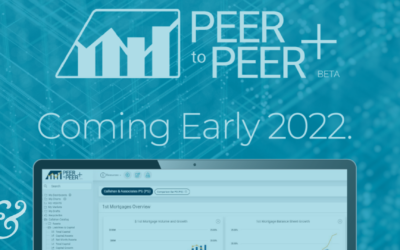Insights From Callahan Consultant, Chris Howard
There’s a growing — albeit misguided — distrust of credit unions today, making effective governance more important than ever … and harder than ever.
At its core, good governance is fairly simple, although never easy. The keys to good governance are to understand what the job is (and what the job is not); to show up, be prepared, and participate constructively; and to check your egos at the door.
I’ve written a lot on CreditUnions.com about the obligations and challenges of good governance, and every year Callahan & Associates works with scores of credit unions on issues of practical governance. Management oversight is invariably the area of greatest concern and focus, but it’s only one job among many.
Here are a few fundamentals that might be less obvious but are arguably just as important. Do these jobs well, and you empower management to excel — making its oversight the easiest governance task of all.
1. You are not your member.
Governance is the representation of member-owners and their interests. To do that effectively, you, as board members, should start by acknowledging you are different from the bulk of the credit union’s membership. You are probably older, wealthier, better educated, and more financially sophisticated. You have different life experiences and have more leisure time; otherwise, you wouldn’t have the bandwidth to be a director. Your interests and expectations will be different as well. Your job is to serve the memberships’ needs, interests, expectations, and life circumstances, not your own.
2. Your primary job is about tomorrow, not today.
The board hires professionals to manage the day-to-day and also help prepare for the future. Ultimately, however, it is the board that articulates why the credit union exists, defines goals and aspirations, and sets the course for getting from where it is today to where it wants to be in the future. That’s strategy. It’s a responsibility the board and management share, but only the board can ensure the credit union’s purpose and aspirations are appropriate, actionable, achievable, and impactful, and only the board can ensure management has the resources, authority, and ability to achieve them.
3. Purpose must be more than a pretty word.
In a mission-driven industry, purpose needs to do more than motivate, energize, inspire, and unite. To deliver on its promise, purpose needs to be actionable. It needs to engage and impact stakeholders constructively and materially. It needs to be integrated into the balance sheet and income statement. It needs to shape the credit union’s products and services and deliver results that are measurable, measured, tracked, and communicated.
4. Always speak with one voice.
This is a key success factor for board governance at any level, in any organization, and no matter the scope of responsibilities. It should be non-negotiable. In the boardroom, skepticism and constructive conflict are not only acceptable but often desirable; however, when the meeting ends, so must all debate. No exceptions. Regardless of what goes on in those meetings, unity and clarity of message is mandatory in public. Nothing legal is less ethical than airing dirty laundry in public. It undermines the cooperative and stifles good governance. Directors have an absolute duty of loyalty and care. Speaking with one voice is the epitome of these most basic obligations.
5. Know your boundaries.
The board’s job is critical and is fundamentally different from management’s job. Boards hire professionals to run the credit union. Let them do it. Stay out of the weeds. Stay away from delinquencies. Don’t get involved in personnel decisions. Boards must focus on managing themselves, meeting the responsibilities specific to them, and making sure their institution is moving, safely and sustainably, in the direction they set. Boards can’t do this if they are distracted by trying to do management’s job. Supervision by looking over management’s shoulder is bad governance.
Bonus: Manage risk, don’t avoid it.
Establishing a reasonable risk appetite, with the advice and cooperation of management, is another job that only the board can do. Good governance means going beyond just signing off on executive recommendations. It’s imperative board members understand the risks the credit union is taking, what board members intend to accomplish by the credit union taking them, and how the credit union intends to manage them. Despite the apparent belief of all too many examiners, credit unions are in the risk management and mitigation business, NOT the risk avoidance business. Setting the parameters to do that is one more simple, but difficult, governance responsibility.
Good governance is active, not passive, but it’s also permissive toward management. Constructive action and positive impact are the product of a board engaged in servant leadership, the true calling of a Class A board. The best boards validate the reasons their credit union exists, empower the team they’ve hired to achieve that purpose, and back management when it comes time to execute. Of course, good boards take responsibility and action when their management team fails to perform, but for the best boards, that’s not an issue.
Sustainable Success Through Strategic Governance
Chris is a consultant at Callahan & Associates. Looking for an outside perspective to facilitate your board meetings or strategic planning? Let’s connect.
More Blogs
Top 5 Articles Of 2021 On CreditUnions.com
It has been a lively year for the credit union industry. A year that started in the throes of COVID-19 has now given way to nationwide economic reopening tempered by labor shortages, inflation, and now, concerns about yet a new variant. Through it all,...
3 Themes For Credit Union CEOs Leading Into 2022
Credit unions have reported a string of significant milestones across 2021. Over the past few months, we've been able to speak with hundreds of credit leaders and wanted to share some of the key themes we’ve been hearing. Digital Transformation Digital transformation...
Alternative Data Sets And How They Can Help Your Credit Union
For credit unions, there’s no such thing as “too much data”. If there’s data that exists for credit unions to get a better gauge on their role in the local community or in the industry at large, it’s in the cooperative’s best interest to uncover it. While typical...
A Successful Launch Starts With A Successful Team
People often ask me why I’m such a passionate credit union advocate. OK, to be honest, the question is usually more along the lines of “why are you obsessed with credit unions”, and the “people” in question are my friends, family, neighbors, kids’ friends’ parents,...
Webinar Recap: How Callahan Quantifies Credit Union Impact
We recently hosted “Measure Your Mission: How To Quantify Credit Union Impact” as part of the quarterly Tableau User Group (TUG) engagement webinar. In it, we outlined the goals of Callahan’s impact initiative, how impact metrics are quantified, and what credit unions...
3 Ways To Use 2Q21 Data
The NCUA has officially released second quarter credit union data. Callahan provides your credit union a multitude of ways to analyze this updated data to benefit your cooperative. Here are three: 1. Build custom tables in Peer-to-Peer In Peer-to-Peer, credit unions...
Recapping The Impact Network Meet-Up
On August 17, dozens of credit unions joined Callahan & Associates for the first ever Impact Network Meet-Up. This event, which was open to Impact Network participants only, was created to help participating credit unions form connections, start impact-related...
2Q21 Credit Union Trends and Takeaways
More than 1,200 industry peers joined us on Aug. 11 for 2Q 2021 Trendwatch. Callahan highlighted trends in lending, membership, and more as behavior amongst credit union members changed in accordance with the steady economic reopening. Most notably, credit union...
We’re Re-Building Peer-To-Peer From The Ground Up, Here’s What You Can Expect
Intuitive design. Faster analysis. Enhanced reporting. All packaged into a sleek, modern interface. Those are just a few of the changes you can expect with the launch of Callahan’s Peer+ software, coming January 2022. We’re excited to share that the classic...
This Month In Impact
This year, Callahan began our impact initiative, in which we seek to build a network of credit unions with the goal of empowering member-owned financial cooperatives to better articulate their value through a mission-focused lens with the help of new metrics and best...











